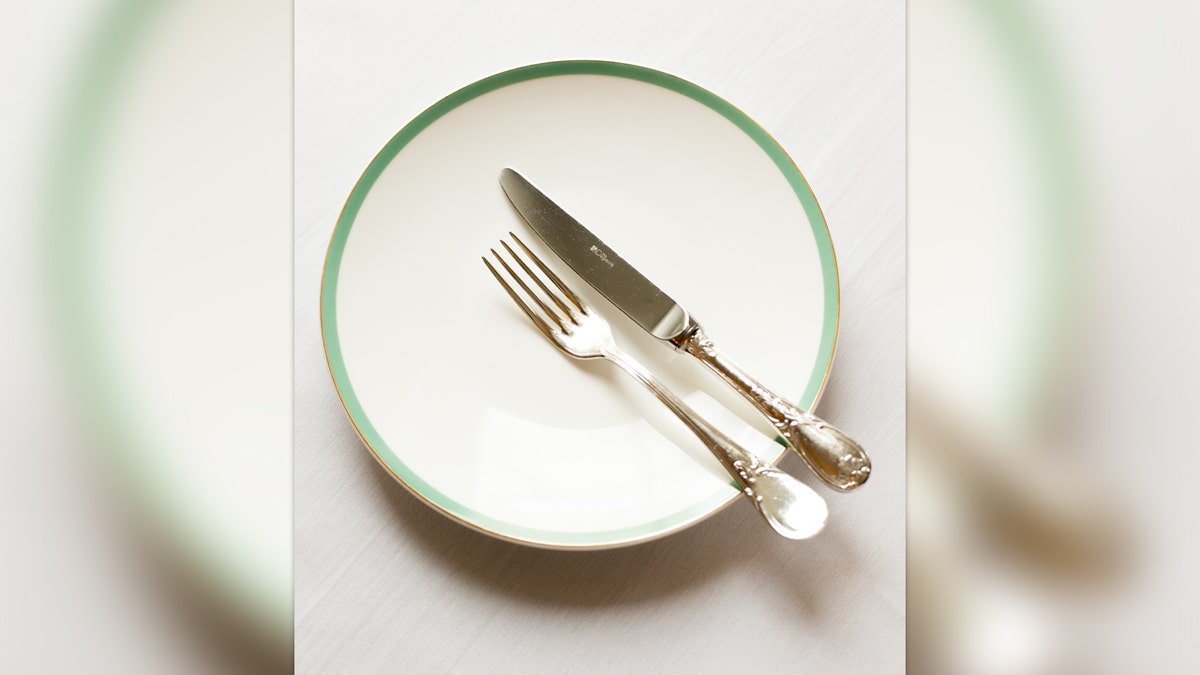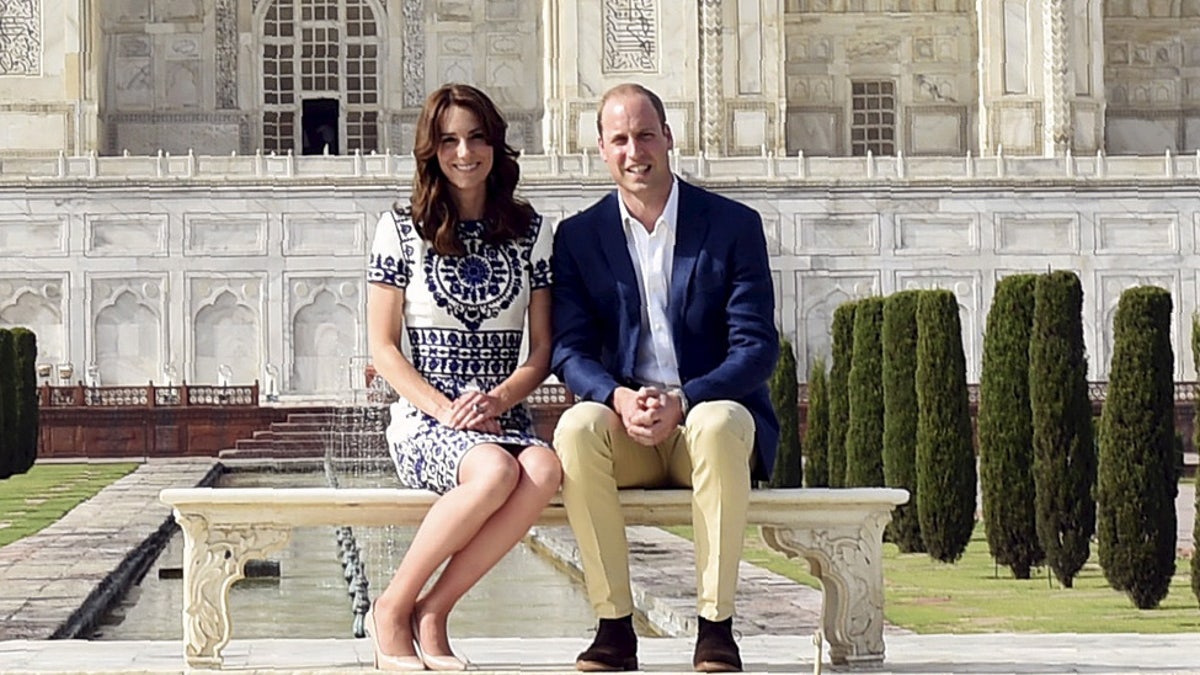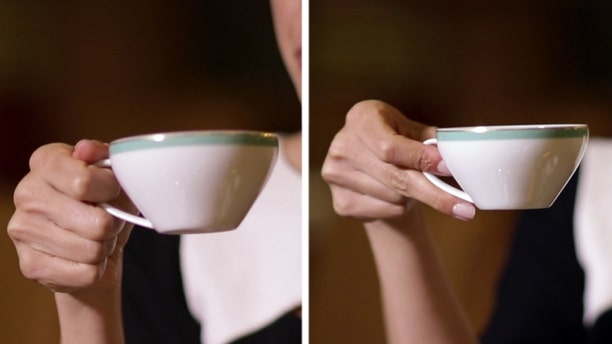British etiquette 101: What Meghan Markle needs to know
Before becoming a royal, Meghan Markle had to take etiquette classes to be perfectly posh. From the way you stir your tea to the way you sit, there is a protocol. Here are some of the manners and customs she may have learned.
As Meghan Markle prepared for her life in the royal family she, like Kate Middleton, underwent etiquette training to make sure she was adequately posh since Day 1.
From the way you sit to the way you hold your tea cup, royal etiquette has very specific protocols.

Myka Meier and Anne Chertoff of Beaumont Etiquette teach etiquette lessons to kids, teens, adults and corporations. (Fox News)
Fox News sat down with Myka Meier, the founder and director of Beaumont Etiquette, and Anne Chertoff, the COO of the Plaza Finishing Program and Beaumont Etiquette project director.
Beaumont Etiquette teaches kids, teens, adults and also corporations the ins and outs of correct etiquette. They also offer group training at New York City’s Plaza Hotel, which involves everything from royal to business etiquette.
Meier and Chertoff demonstrated what is expected of a newly minted royal.
Napkin Etiquette
Of all the different expectations, napkin etiquette is seemingly the most practical. Its goal: keep your face clean. The correct etiquette when you sit down at a table is to unfold the napkin, then refold it in half with the crease facing your stomach. If you need to clean your face, you open the fold and dab – not wipe – your mouth with the bottom half of the napkin then refold it. This ensures that the stains remain on the inside of the napkin.
When you need to get up from the table temporarily, pinch the middle of the fold, lift it and place it on your chair to signal to the wait staff that you will return. At the end of the meal, you place it to the left of your place setting.
Tea Etiquette
The British enjoy “afternoon tea” not “high tea,” as Meier pointed out— and it has many rules to follow. First things first, your saucer stays on the table and your tea cup rests on it with the handle pointing to your three o’clock. To stir in sugar or cream, it’s neither clockwise nor counter-clockwise. You move your spoon back and forth from twelve o’clock to six o’clock a maximum of six times. Shake the excess liquid from your spoon over the drink without touching the spoon to the china. This is to protect the cup from chipping.
The way you hold a coffee cup is different from holding a tea cup. To hold a coffee cup you loop your pointer finger through the handle and make a soft fist. For tea, your pointer and thumb meet on the inside of the handle and then support the cup with your middle finger. The rest of your fingers remain tucked into you palm. Despite the myth, never pinkies out.
Dining Etiquette
When you sit down for a formal dinner, the amount of cutlery you see might be overwhelming. But Chertoff told Fox News the hard and fast rule is first start with the side that has the most cutlery and then work your way in, closer to your plate.

This is the way you leave your cutlery when you are breaking from a meal. (Beaumont Etiquette/Adeline Ramos)
No matter what side of the pond you are, you cut with the knife in your right hand and anchor your food with the fork in your left. From there, American and British etiquettes differ. In America, it’s perfectly acceptable to put down your knife and switch your fork to your right hand. In British etiquette, your knife stays in your right hand and the fork in your left. You then put the food into your mouth, prongs down.

In the U.K. this is the way you leave you cutlery when you are finished with a meal. (Beaumont Etiquette/Adeline Ramos)
If you need to leave the table, you position your knife and fork into an upside down V. This will let the wait staff know you plan on returning. When you’re finished with your meal, in the U.S. you point the cutlery handles to your four o’clock and in the U.K. you position it twelve to six.

In the U.S. this is how you leave your cutlery when you are finished with a meal. (Beaumont Etiquette/Adeline Ramos)
Sitting Etiquette
For ladies, you must keep your knees and ankles together. Meier suggests pretending you have a rubber band holding your legs together. You can tilt your legs into an angle into what Beaumont Etiquette calls the “Duchess Slant.” This helps protect you from a Sharon Stone situation if you are facing a crowd or a camera. If you would like to cross your legs, cross at your ankles, not your knees.

Catherine, Duchess of Cambridge demonstrates what Beaumont Etiquette calls the "Duchess Slant" in front of India's Taj Mahal. (Reuters)
Handbag Etiquette
Clutches are acceptable handbags. They can be held in front of you with both hands or to your side in your left hand. This keeps your right hand free to shake hands. Never put the bag under the pit of your arm.
There you have it. Now you can enjoy the royal wedding and be perfectly posh.








